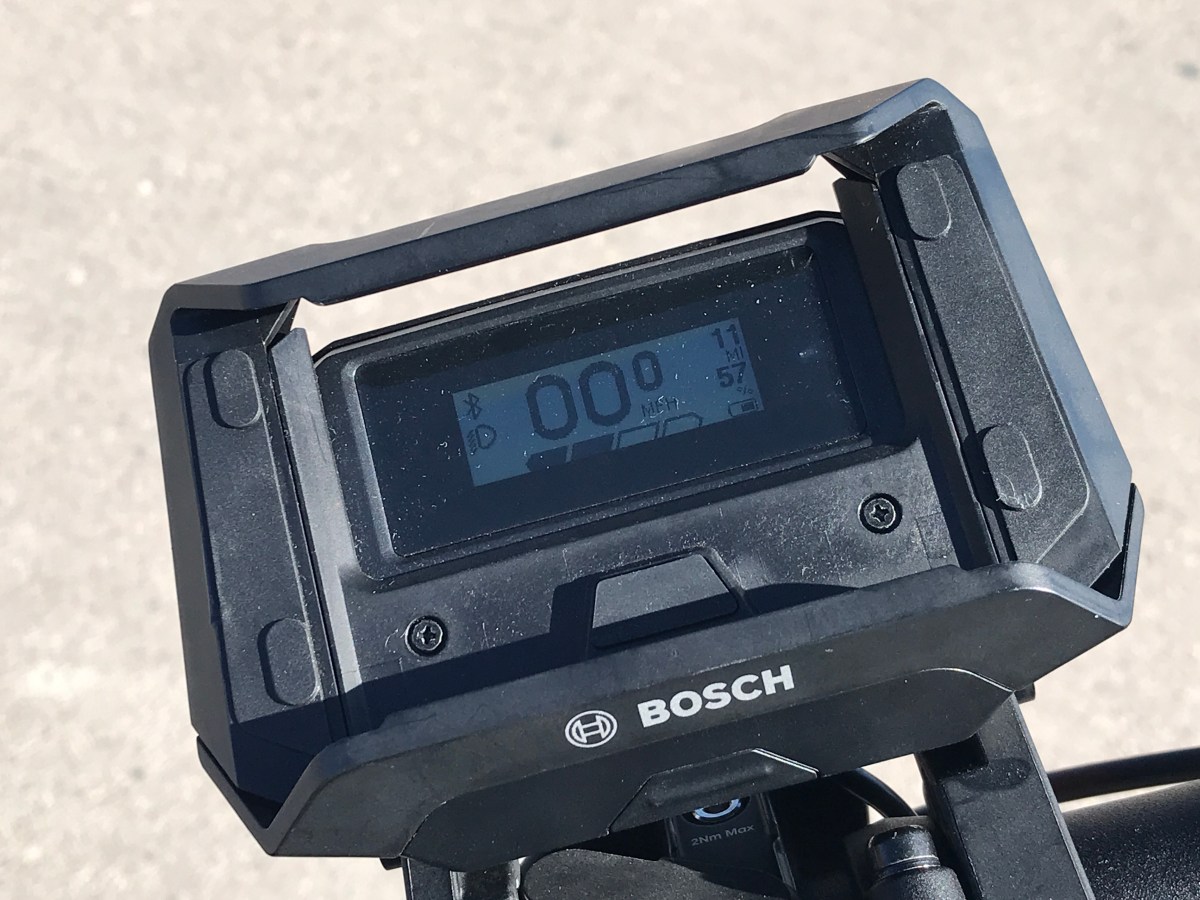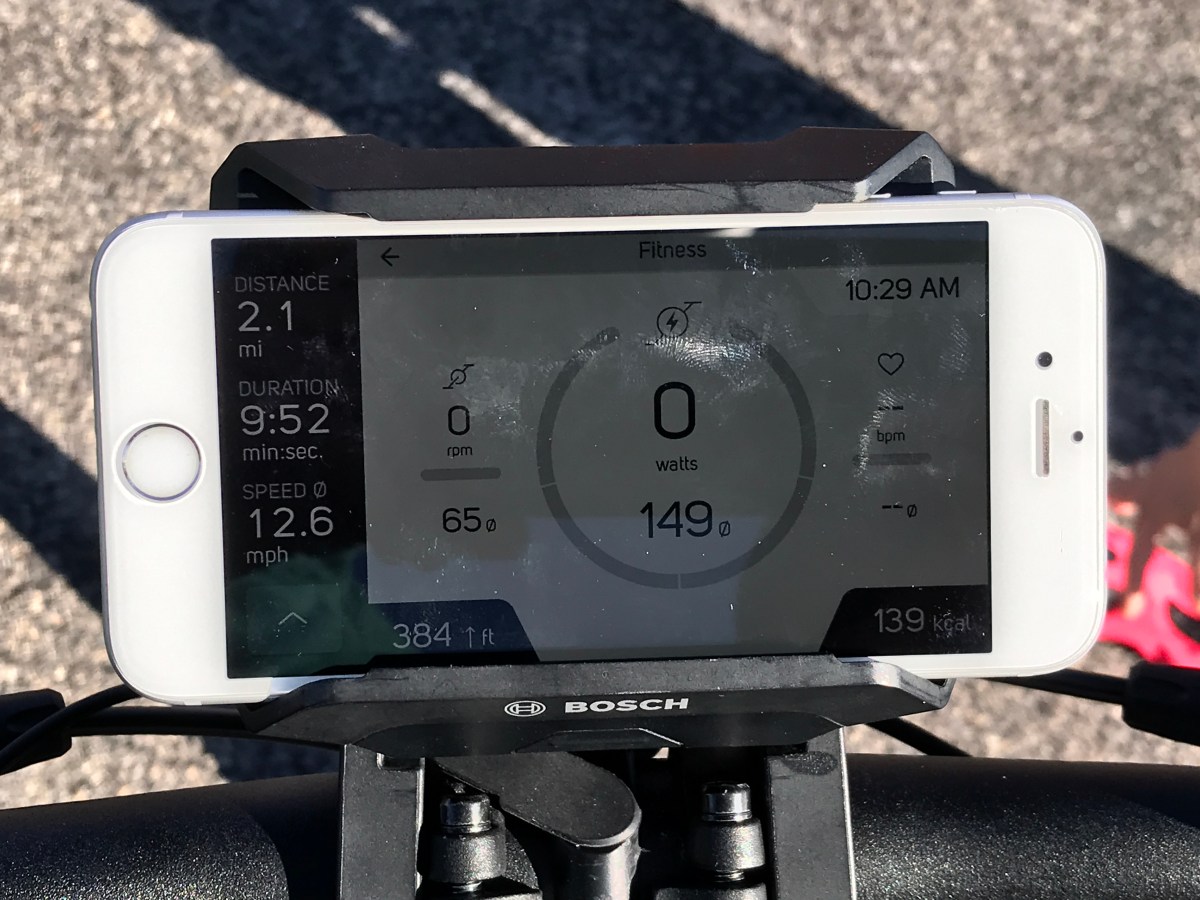This story is part of our continuing coverage of CES 2020, including tech and gadgets from the showroom floor.
Today’s best electric bikes are sleek machines with high-tech features like integrated batteries, alarm systems, and wireless app connectivity. Yet you’ll likely control the bike with a black-and-white LCD that looks like a 1980s alarm clock. If you’re lucky, it’ll be backlit.
That doesn’t match the desires of tech-savvy urban cyclists who buy ebikes. Bosch has a pair of solutions, one for rugged mountain biking, the other for everyday commuters. I put them through their paces during a press event held in Red Rock Canyon outside Las Vegas.
Kiox is a rugged onboard computer
Serious off-road bikers should look for Kiox, an onboard computer with a rectangular, full-color 1.9-inch display. The screen’s not large, but it’s bright, covered with Gorilla Glass, and has an anti-glare finish that ensures the display is easy to see even at high noon on a bright summer day.
The Kiox computer itself, including the display, is removable thanks to its magnet attachment system. This has two benefits. First, you can take the screen with you to guard against theft or vandalism. Second, the onboard computer can pop off on impact. That can save the screen by letting it get out of the way instead of taking the full force of a crash.

Like most onboard computers, the Kiox can display a wide variety of fitness data. It can also sync with Bluetooth-enabled heart rate monitors for accurate training data. Bluetooth connectivity can also be used to sync data with various apps.
Kiox isn’t new for CES 2020, but you likely haven’t used it yet. Few electric bikes in the U.S. offer it yet. It now has a Lock function, which deactivates the motor when the onboard computer is disconnected. There’s also now an ABS light for bikes with that feature.

While Bosch says Kiox is targeted at “sporty riders,” I think it’s great for everyone. The screen isn’t large, but it’s bright, sharp, and colorful. It’s also very easy to read. I rode a bike with Kiox on a sunny day in the Nevada desert, yet never had the slightest trouble reading the screen. In fact, it’s clearer than the black-and-white LCDs I’ve used.
Kiox is exactly what I’d like to see every e-bike come with, and a major leap beyond the lame black-and-white LCDs that are still so common on
SmartphoneHub is an infotainment center for your bike
Cyclists have used phones as an onboard bike computer for a decade, but there’s plenty of problems with that setup. The smartphone is exposed to damage, the mounts aren’t always reliable, and leaving the screen on constantly will quickly drain a phone of battery.
The Bosch SmartphoneHub addresses those problems with a clamp that’s built into the handlebars. It provides a secure hold on the phone in landscape orientation. Plus, the SmartphoneHub has a USB port that can provide power to the phone, so you don’t have to worry about running out of battery life.

Bosch designed the Hub to work with the Cobi.Bike app which, once launched, does exactly what you’d hope an app for cyclists would. You can use it to view your riding stats, of course. But you can also use it for navigation, to call contacts, or view weather predictions.
I can’t heap enough praise on the app. It’s excellent. App issues have stopped my efforts to use a

That said, I think some riders here in the U.S. will be disappointed the app doesn’t come from a more well-known company. Cobi.Bike is big in Europe, I’m told, but I’ve never witnessed anyone use it in America. Luckily, the app can connect to other fitness services like Apple Health, Google Fit, and Strava.
The SmartphoneHub is meant to be used with your phone, but it also has a 1.52-inch black-and-white LCD. This screen sits beneath where you clamp the phone, so it’s only visible if you don’t connect it. This is the backup screen. If you don’t have your phone on you, the built-in LCD can display basic information like speed and range remaining.
SmartphoneHub is clever, but sign me up for Kiox
I tried the SmartphoneHub alongside Kiox during my 13-mile press ride. The Hub works like a charm. I’ve never had much luck using cycling apps to track my fitness data. They often prove finicky or inaccurate. The SmartphoneHub and the Cobi.Bike app suffered none of those problems. The app was fast, responsive, and easy to control. My effort was accurately portrayed in RPMs, watts, and calories burned because the app’s data comes directly from the bike.
And yet, I still preferred the Kiox. For all the Hub’s strengths, it couldn’t defeat a basic problem that exists on every phone. Glare. Placing a large

Kiox had none of those issues. The 1.9-inch screen was small, but it displayed everything I needed to know. I also like the smaller screen’s lack of distractions. The information I need is available at a glance, but the screen doesn’t dominate the space in front of me. I can concentrate on enjoying the ride.
Still, I’ll acknowledge the usefulness of SmartphoneHub. The navigation and contacts features seem great, and their usefulness will double if your phone is paired with exercise headphones or a smart helmet. You can see and hear turn-by-turn directions, just like a modern car’s infotainment system.
Kiox and SmartphoneHub are available now on select
Follow our live blog for more CES news and announcements.
Editors' Recommendations
- I was wrong. E-bikes are so practical, they’re a transit cheat code
- Spinciti’s Amsterdam e-bike offers speed and range at an affordable price
- Vintage Electric honors Shelby with limited-edition e-bike for Cobra fans
- Walmart slashes prices on electric hybrid bicycles for National Bike Month


